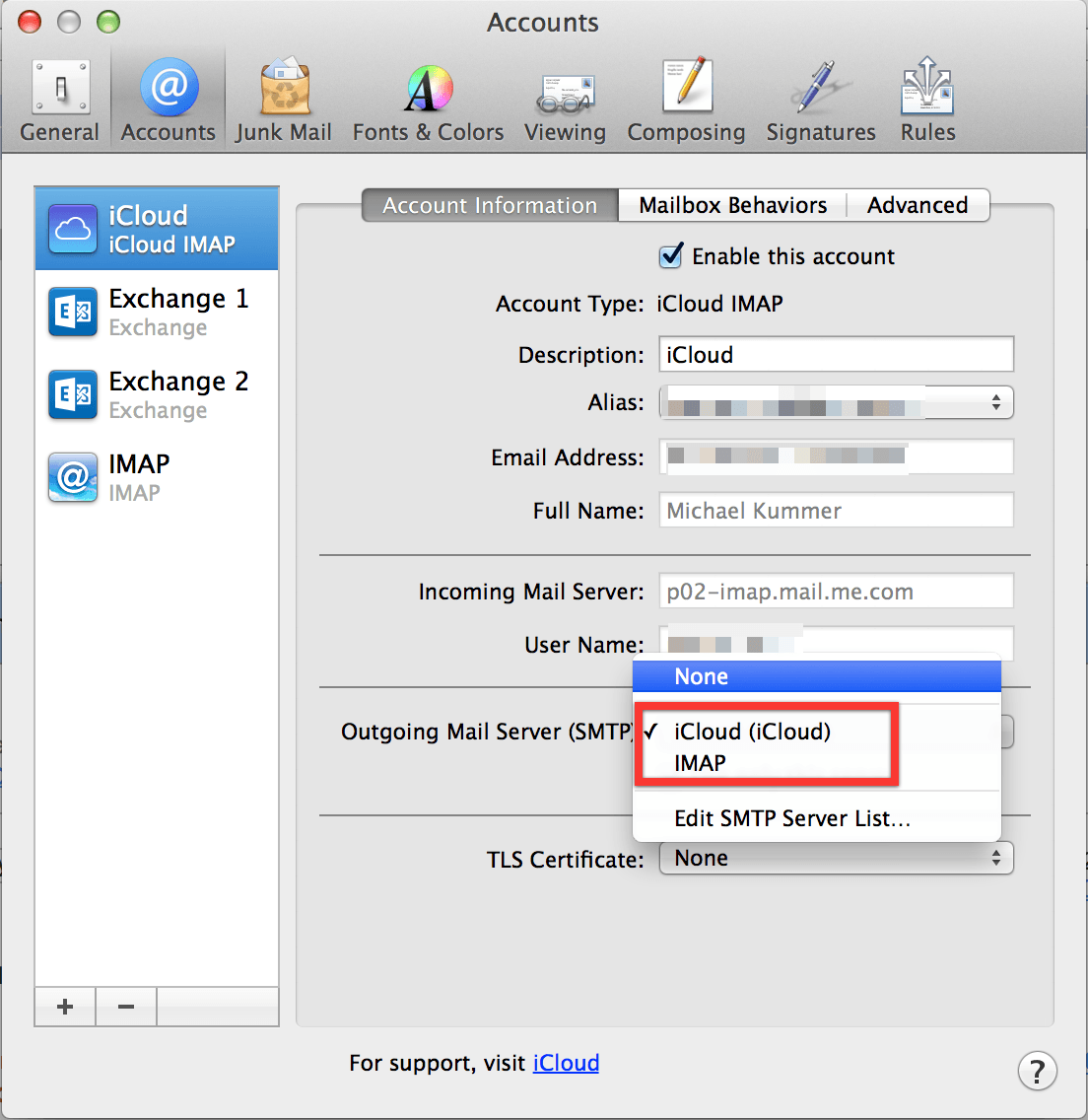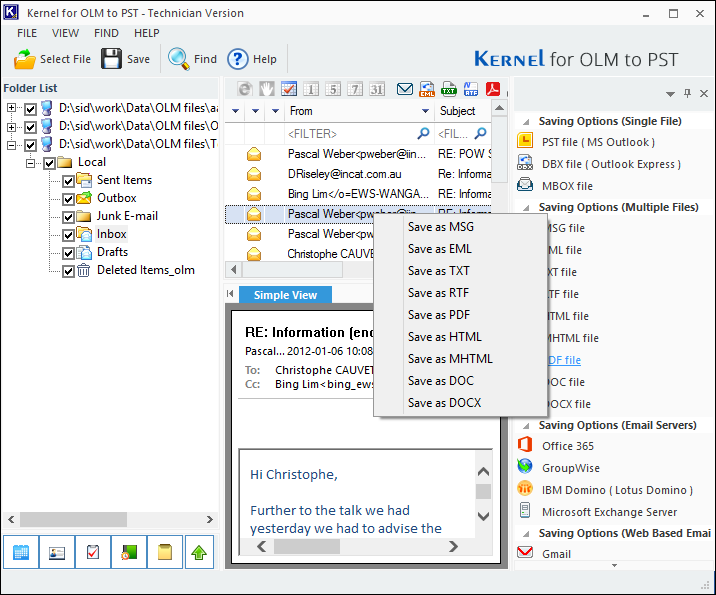
Even if you are a great fan of Apple/Mac OS X products, sometimes you need to use few Microsoft products too. When your company's email system hosted on Microsoft Exchange server (in most cases), then you need to setup your Mac laptop or desktop computer to connect the Exchange server. The thing is, you may not know the version or the platform of mail server, in case you know the version then it will be easy to configure on Mac OS X. This guide shows you how to configure Exchange 2013 mail on Mac OS X Yosemite (applicable for earlier versions too, like Mavericks, Mountain Lion), edit advanced settings of Exchange 2013 mail server and setup out of office from your Mac OS X default mail app.

Microsoft Exchange Server 2019 is the latest version of Exchange. Previous versions include Exchange 2016, Exchange 2013, Exchange 2010, and Exchange 2007. Follow Microsoft 365. If you have not already added an account to Mail you will be directed to the New Account Wizard. If you have already created an account in Mail, click File, then Add account from the drop down menu. Select Exchange and click Continue. When the New Account wizard opens, enter the following in the text boxes provided.
- Open the Apple Mail app from the Dock. Select Exchange in the list and click Continue. Enter your full Name, Email Address and Password.Click on Continue. A Verify Certificate popup message might be displayed. If yes, click on Continue. Wait until the app establishes the connection to the mailbox.
- Outlook includes MailTips, which help you avoid common, but potentially costly or embarrassing, mistakes. MailTips alerts can be triggered by actions including clicking Reply All to a large recipient list, sending sensitive information to someone outside your organization, or sending a message to someone who is out of office.
The latest Exchange 2013 server (assuming it has been setup properly by your mail server administrator) and latest Yosemite Mail app talk nicely and auto configure most of the time. Therefore it is not like earlier versions of Exchange server and mail apps which mostly require more settings to setup Exchange mail on Mac.
What Do you Need to Know?
1) Your email address (of course)
2) The email password
3) Your login user name of exchange server (some times only)
4) The mail server URL (some times only)
As I said earlier, if all settings are correct and your login user name and email address alias are same in your organization, then the auto configuration will work with first two requirements only (by typing the email address and password)
Steps to Configure Exchange 2013 on Yosemite Mac
1) Open the mail app and go to Accounts.
2) Select the Exchange account.
Next screen will pop-up to enter the email address and password. Give a name for the account and enter email address and password.
If there is an issue in authentication with the mail server, then the next screen will appear for more details. Brute force password cracker free for windows 7. In this example, my email address alias ( which is before @test.com) is different than my exchange server authentication user name.
For example, my email address is dinesh@test.com, but the user name for authentication could be dinesh.j
Normally the mail clients will use the alias of email address ( ‘dinesh' in this case) to login to mail server with the password you have provided. If it is different, then in the next screen you need to give the correct user name. Also, validate the mail server address too.


Mail Client For Mac
Read Also:How to select the best CRM app for Mac in your business.

Even if you are a great fan of Apple/Mac OS X products, sometimes you need to use few Microsoft products too. When your company's email system hosted on Microsoft Exchange server (in most cases), then you need to setup your Mac laptop or desktop computer to connect the Exchange server. The thing is, you may not know the version or the platform of mail server, in case you know the version then it will be easy to configure on Mac OS X. This guide shows you how to configure Exchange 2013 mail on Mac OS X Yosemite (applicable for earlier versions too, like Mavericks, Mountain Lion), edit advanced settings of Exchange 2013 mail server and setup out of office from your Mac OS X default mail app.
Microsoft Exchange Server 2019 is the latest version of Exchange. Previous versions include Exchange 2016, Exchange 2013, Exchange 2010, and Exchange 2007. Follow Microsoft 365. If you have not already added an account to Mail you will be directed to the New Account Wizard. If you have already created an account in Mail, click File, then Add account from the drop down menu. Select Exchange and click Continue. When the New Account wizard opens, enter the following in the text boxes provided.
- Open the Apple Mail app from the Dock. Select Exchange in the list and click Continue. Enter your full Name, Email Address and Password.Click on Continue. A Verify Certificate popup message might be displayed. If yes, click on Continue. Wait until the app establishes the connection to the mailbox.
- Outlook includes MailTips, which help you avoid common, but potentially costly or embarrassing, mistakes. MailTips alerts can be triggered by actions including clicking Reply All to a large recipient list, sending sensitive information to someone outside your organization, or sending a message to someone who is out of office.
The latest Exchange 2013 server (assuming it has been setup properly by your mail server administrator) and latest Yosemite Mail app talk nicely and auto configure most of the time. Therefore it is not like earlier versions of Exchange server and mail apps which mostly require more settings to setup Exchange mail on Mac.
What Do you Need to Know?
1) Your email address (of course)
2) The email password
3) Your login user name of exchange server (some times only)
4) The mail server URL (some times only)
As I said earlier, if all settings are correct and your login user name and email address alias are same in your organization, then the auto configuration will work with first two requirements only (by typing the email address and password)
Steps to Configure Exchange 2013 on Yosemite Mac
1) Open the mail app and go to Accounts.
2) Select the Exchange account.
Next screen will pop-up to enter the email address and password. Give a name for the account and enter email address and password.
If there is an issue in authentication with the mail server, then the next screen will appear for more details. Brute force password cracker free for windows 7. In this example, my email address alias ( which is before @test.com) is different than my exchange server authentication user name.
For example, my email address is dinesh@test.com, but the user name for authentication could be dinesh.j
Normally the mail clients will use the alias of email address ( ‘dinesh' in this case) to login to mail server with the password you have provided. If it is different, then in the next screen you need to give the correct user name. Also, validate the mail server address too.
Mail Client For Mac
Read Also:How to select the best CRM app for Mac in your business.
That should work most of the time. It will communicate with the server, validate the settings and give a summary as below.
Adobe photoshop for mac sierra. Adobe has discovered the compatibility issue listed below with running Photoshop with macOS 10.13 (High Sierra). Adobe strongly recommends that customers update to the Photoshop CC 2017 release prior to updating to macOS 10.13 (High Sierra). Older versions of Photoshop were not designed, nor extensively tested to run on macOS High Sierra. Adobe has discovered the compatibility issues listed below with running Photoshop with macOS 10.12 (Sierra). Adobe strongly recommends that customers update Photoshop 2017 prior to updating to macOS 10.12 (Sierra). Older versions of Photoshop were not designed, nor extensively tested to run on macOS Sierra. This version of Photoshop runs on Mac, version 10.12 or later (Sierra). There is also a version for Windows. Is there a better alternative? In terms of an all-round image editing app or photo editor, no: Photoshop is the best. Users should bear in mind, however, that not everyone needs an all-around app or powerful photo editor.
Select the modules of mail app you wish to synchronize with your Yosemite Mac OS X and Exchange 2013 server like mail, contacts, calendar or notes. In this example I have selected only mails. Because I did not want my corporate office contacts and calendars to reside on my Mac.
To see more options of mail account, you can click on the menu and select Accounts.
Here you will get more settings of particular email account. You can set the signature for all outgoing emails from mail app of Exchange 2013 account. Other settings of fonts, viewing and composing can be modified here. Also, you can set rules for incoming and outgoing emails to go in to particular folder in email app.
Must Read:The best gaming laptops for less than 1000 US dollars.
How to Set Out of Office in Mail Yosemite with Exchange 2013
Exchange Mail Services
Setting up the out of office is easy and it works great. To setup out of office, right click on the Exchange server mail box and select Out of Office.
As usual you will find two input messages for internal and external mail senders. Internal Reply message will be sent to the same (or emails hosted on the same mail server in your domain) internal senders in your company and external reply will be sent to the external senders.
Type the message and set the dates.
Mail On My Mac
I hope this guide would be helpful in setting up and configuring Exchange 2013 mail on Yosemite mail app.
